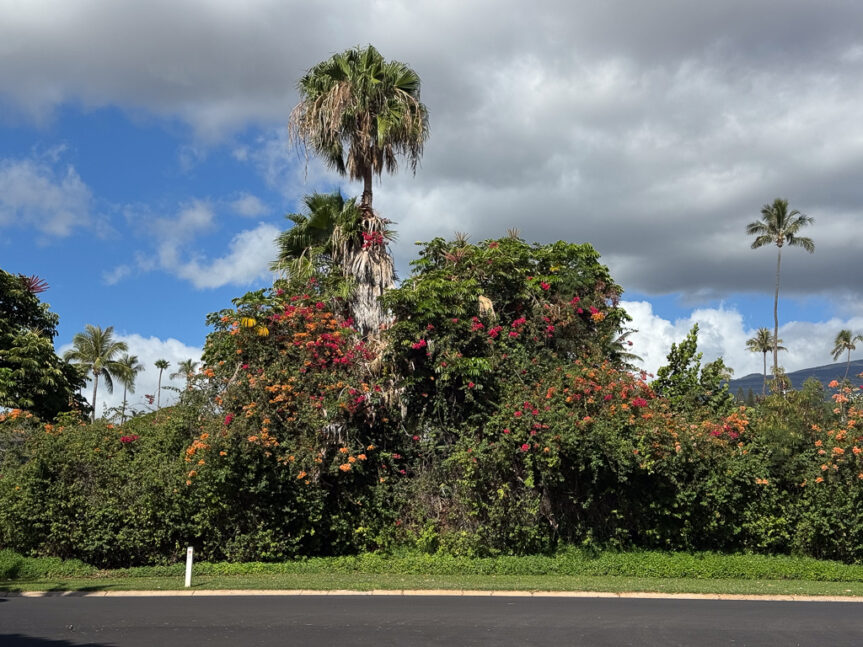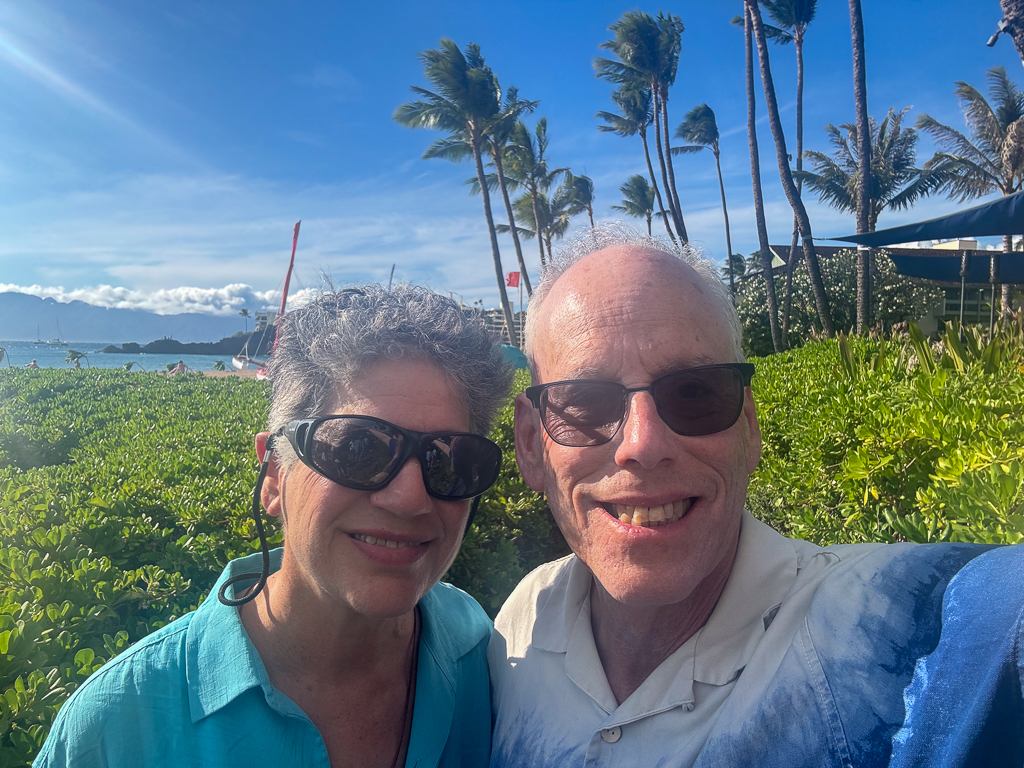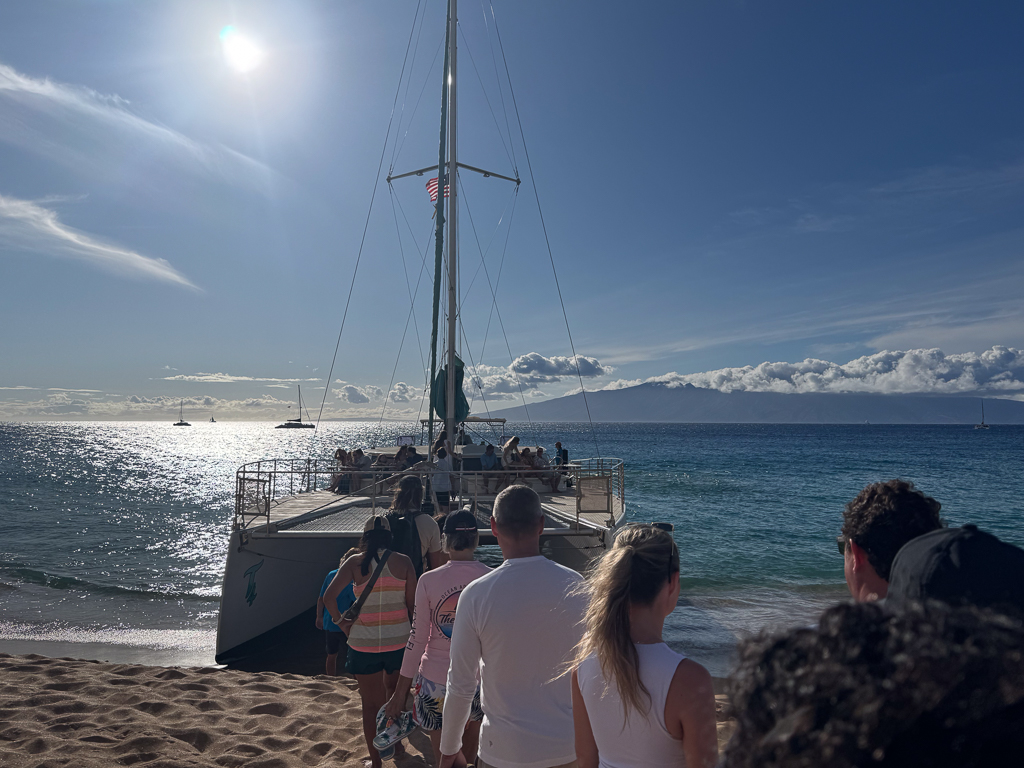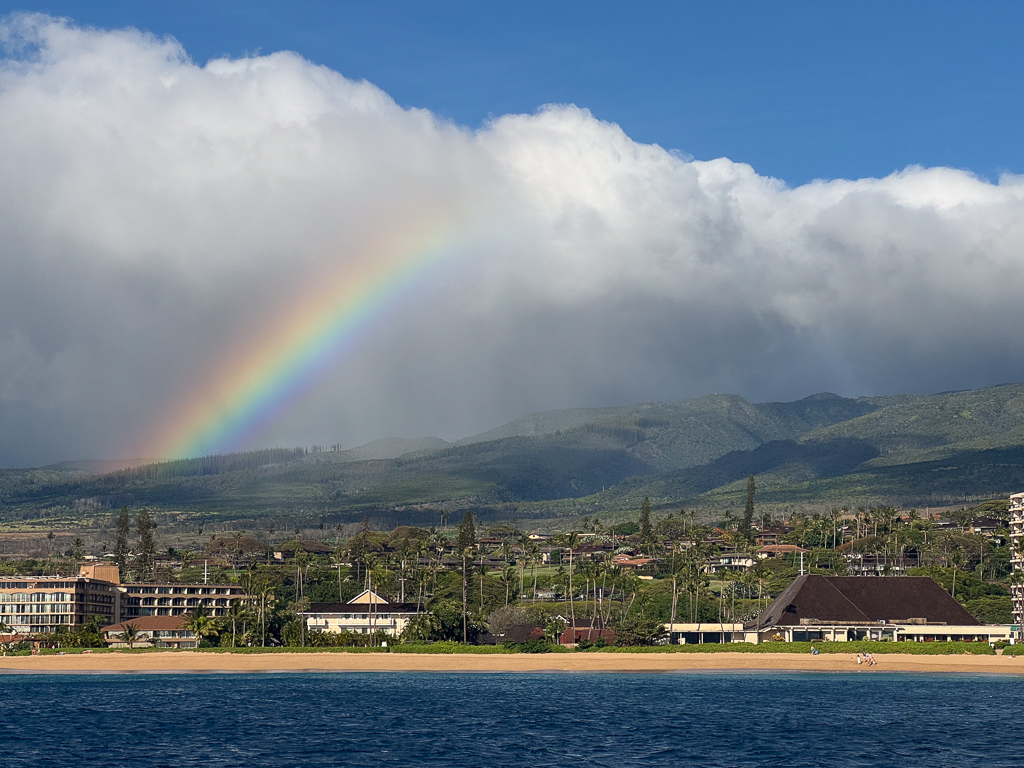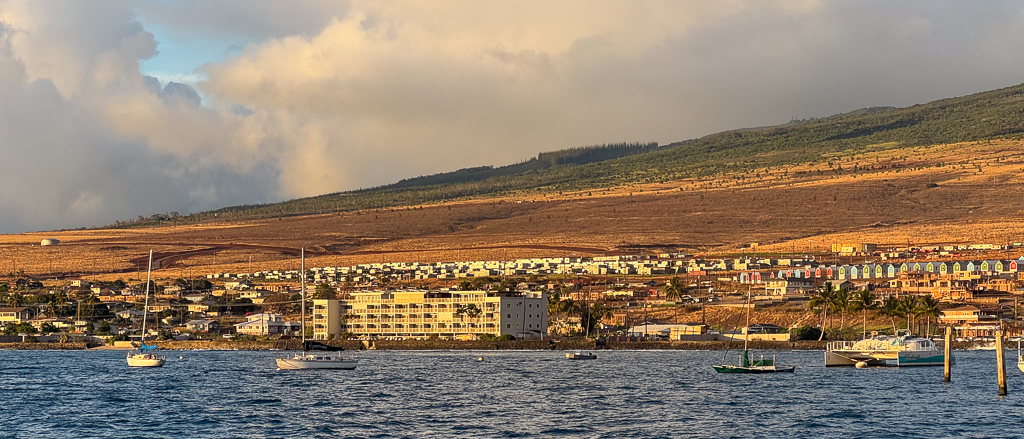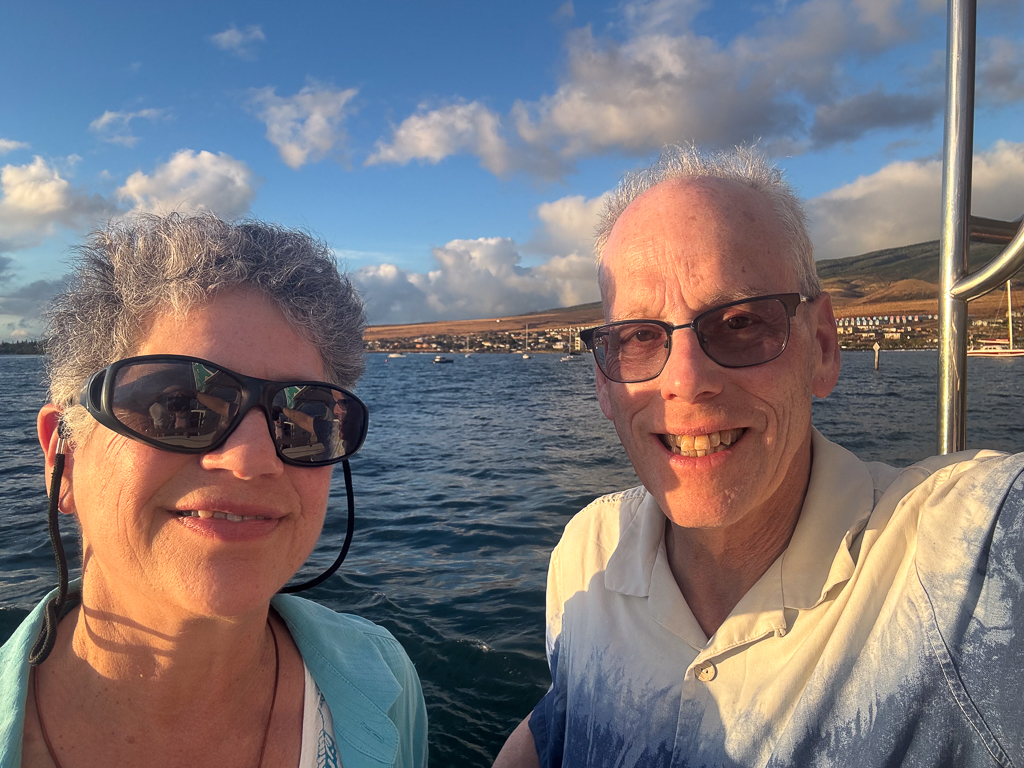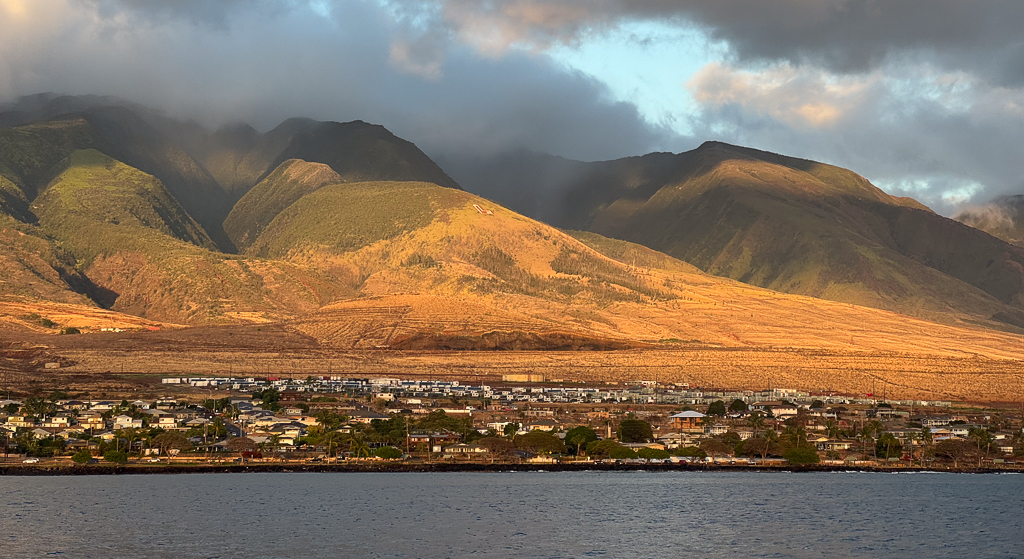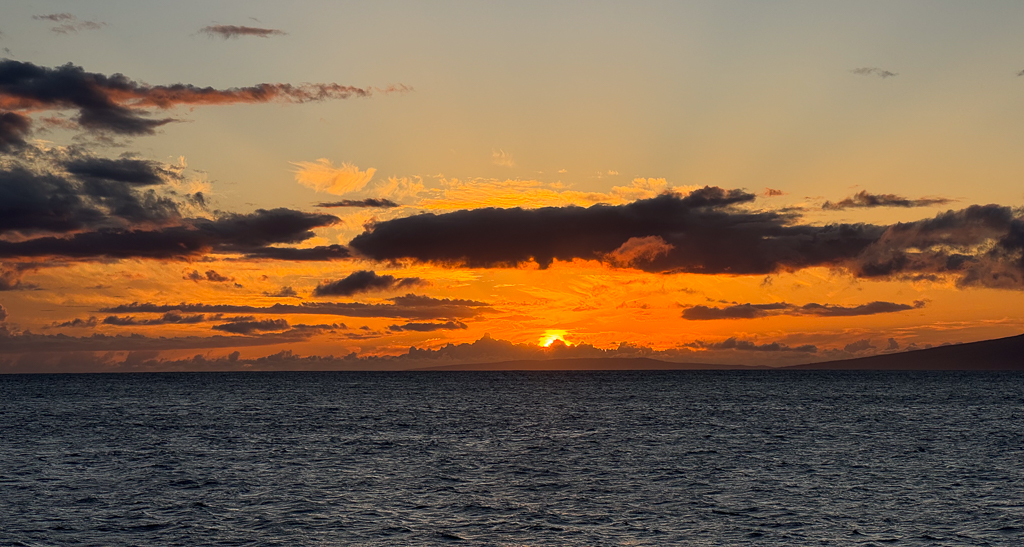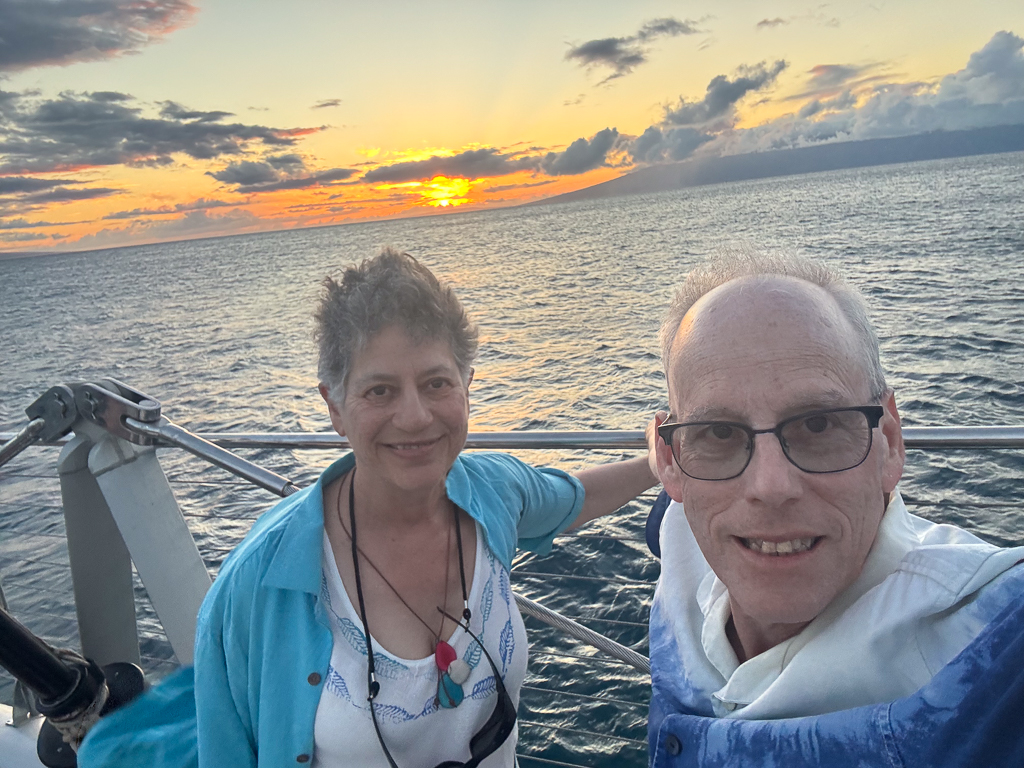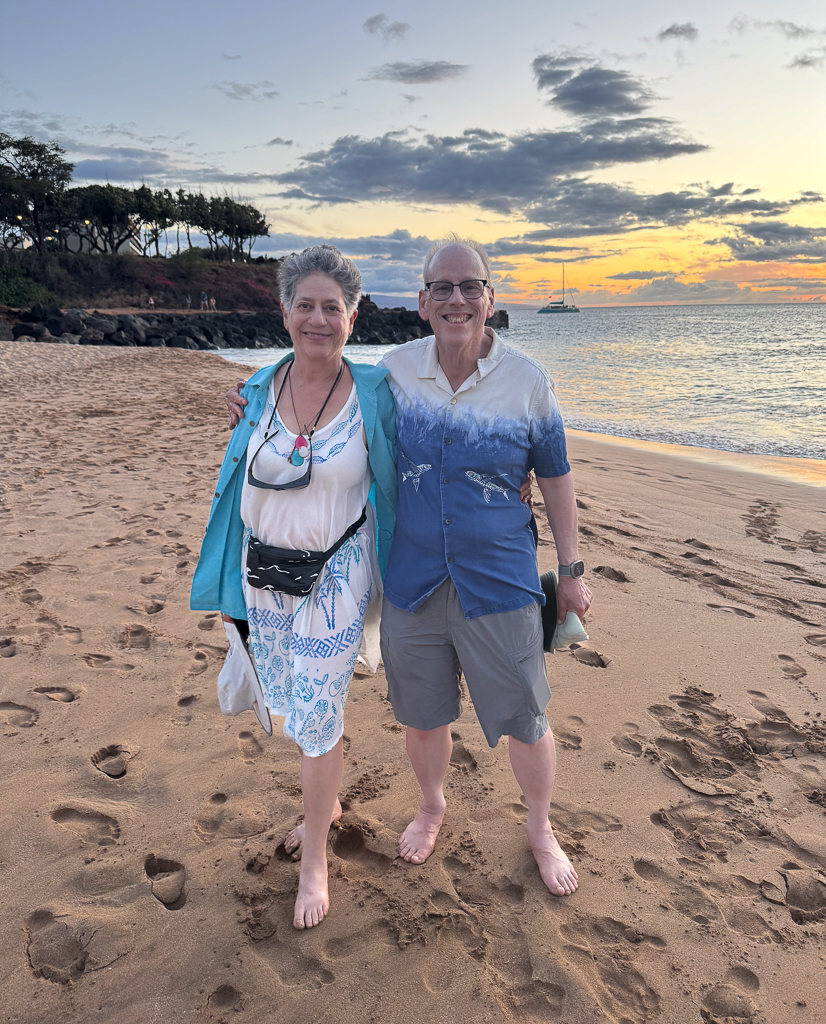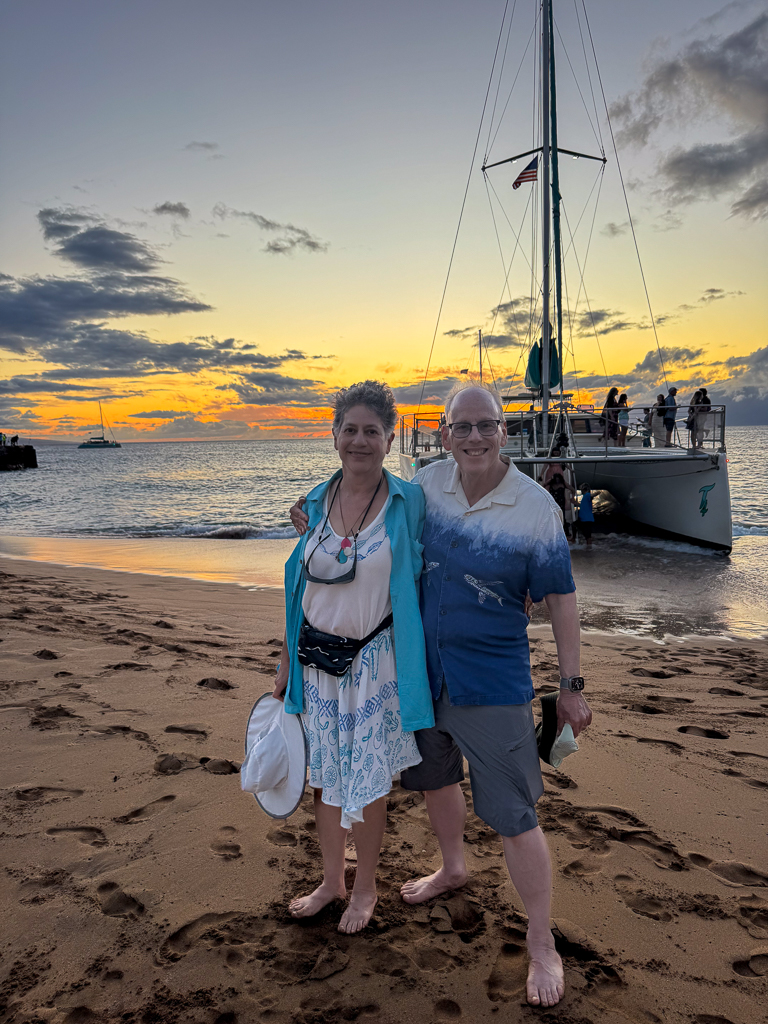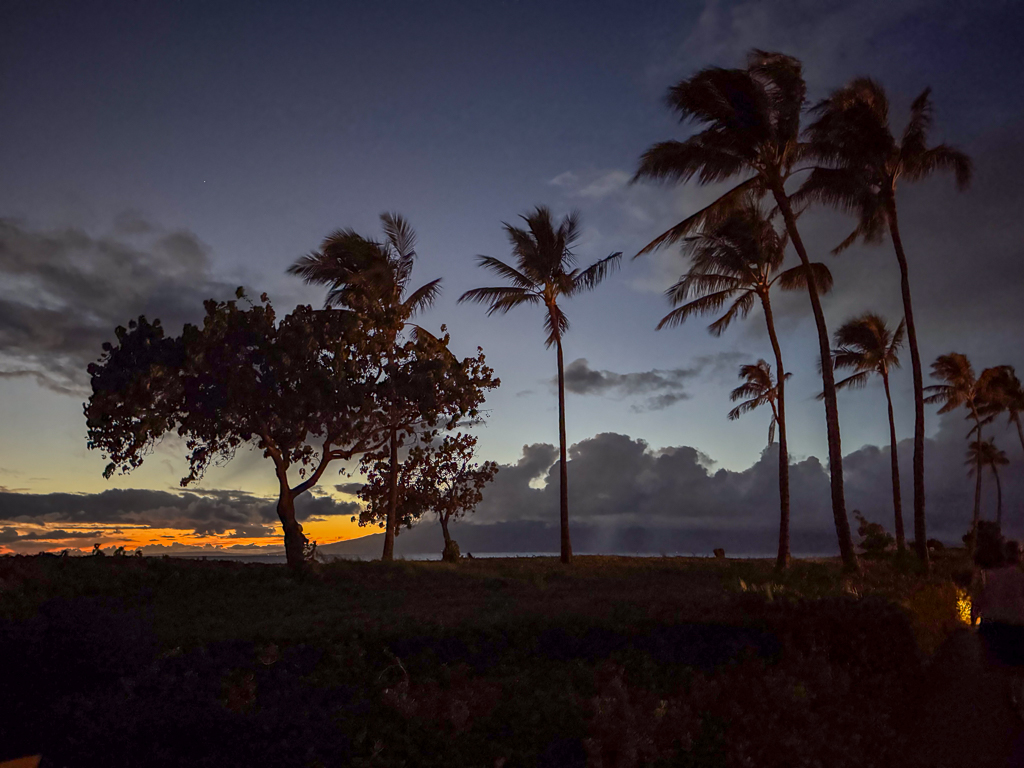We started the day by testing Diane’s mask in the pool to see if it leaked. It did, which meant we’d be visiting The Snorkel Store later in the day.
But first, we wanted to go to the Maui Craft Fair and visit our favorite gyotaku supplier, Norain of Primitive Hawaiian Gyotaku and see if she had any interesting garments. She did – Diane bought a calamari dress and David bought his second octopus shirt.
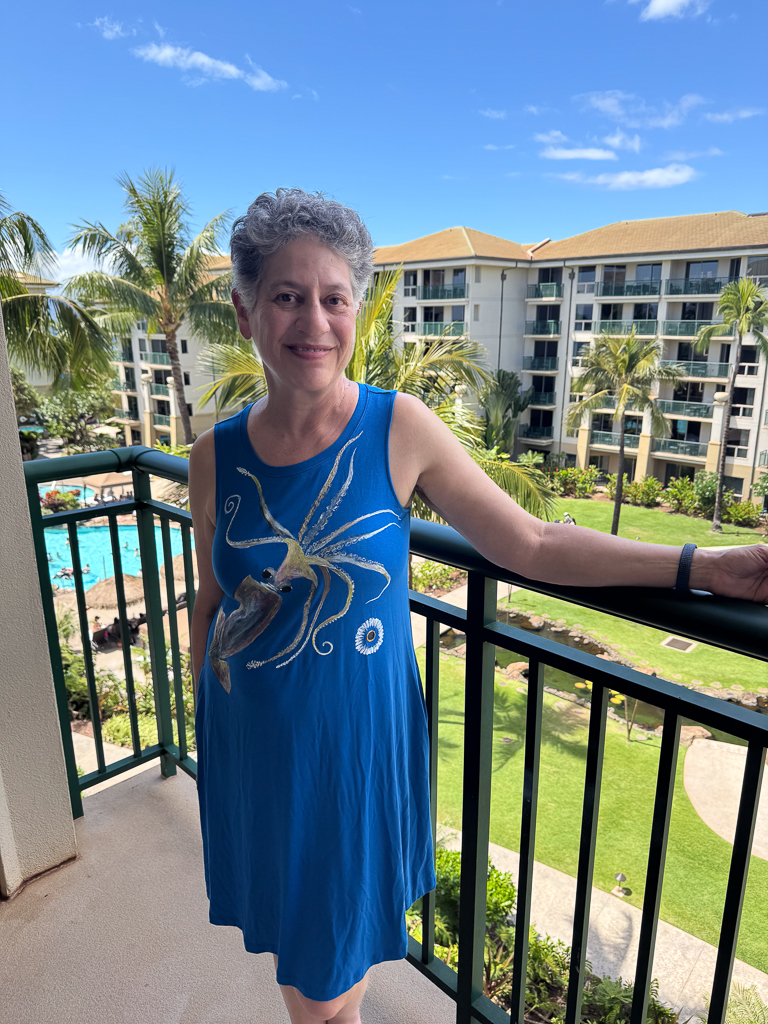
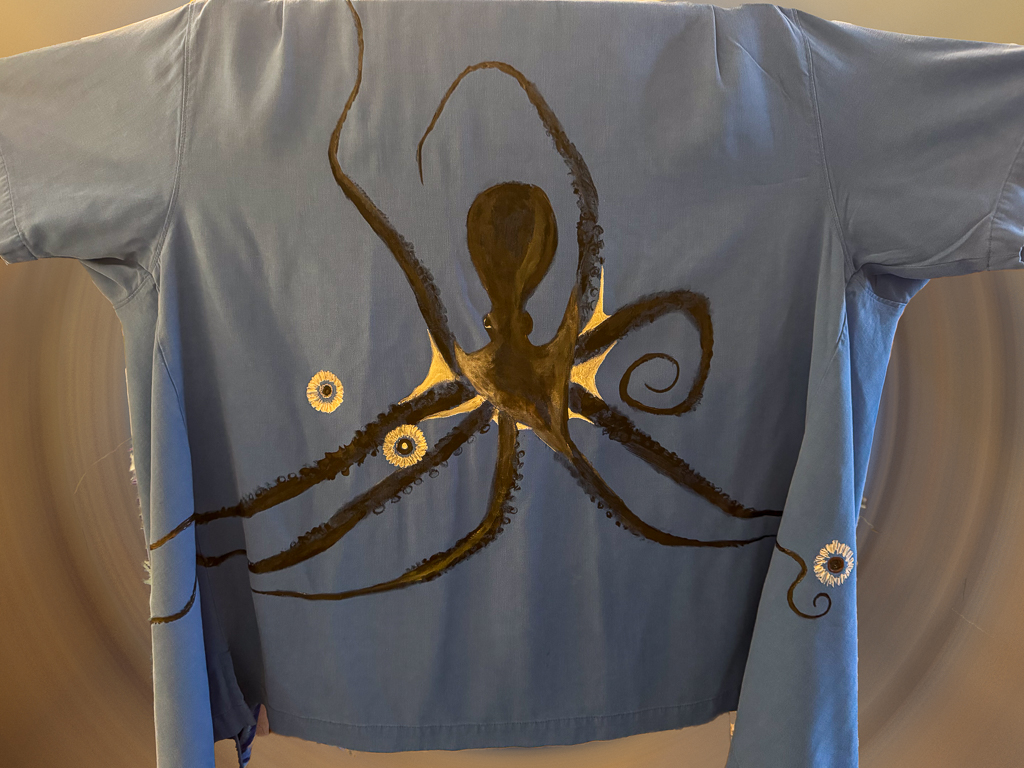
David also bought a brand new aloha shirt from “Howie in Maui” – it must be good if Prince Harry has one, and it was only $43 anyway.

By the time we’d finished shopping for clothes, we were hungry. We wanted to eat at Leoda’s Kitchen and Pie Shop in Owolawu, but the line was very long, so we tried Margarita’s Pizza food truck nearby. I wanted to see what people said about the food truck, but failed at finding it on Google or Yelp (the name is just too generic); we asked a couple of strangers who were leaving what they thought, got a thumbs-up, and gave it a try – it was very good and reasonably priced, with friendly fast service.
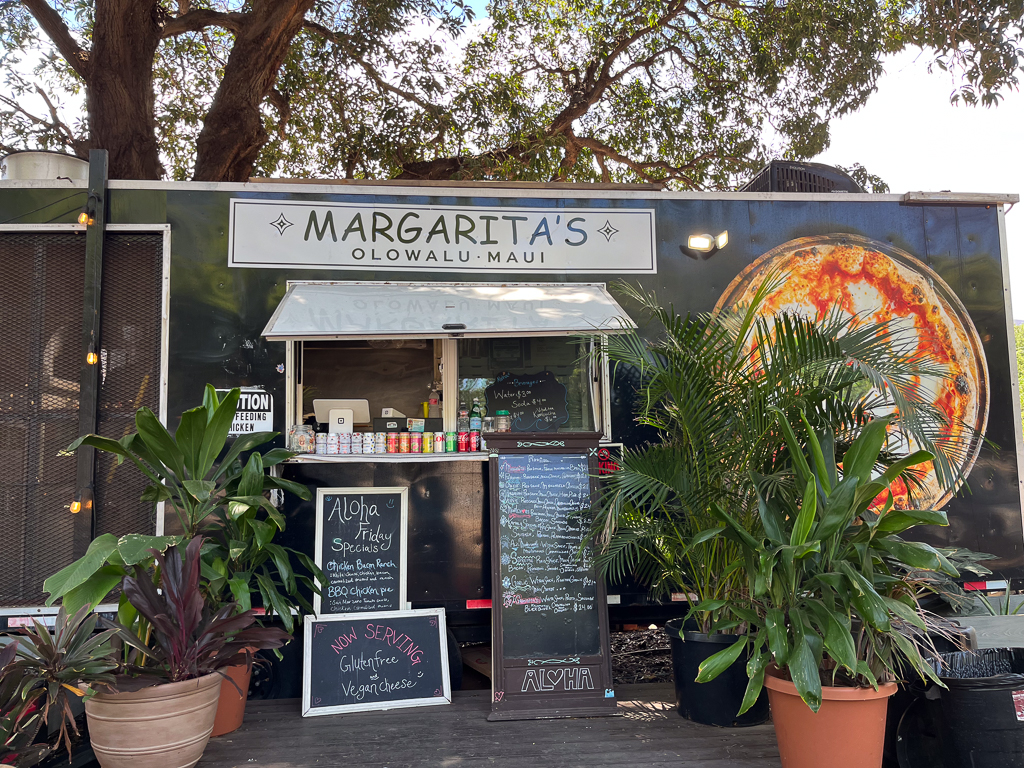
Then it was finally off to The Snorkel Store to pick up a replacement mask for Diane. They suggested she rent one and if she likes it, she can buy it at the “gently used” price ($20 off); if not, we’re only out $5 for a day’s rental. She tested it tonight in the pool…so far, so good.
After that, we took our daily Beach Walk hike to Whalers Village. Along the way, we saw the Teralani 4, which was our boat on yesterday’s cruise, and a nice multi-colored bougainvillea (see the photo at the top of the page).

We were lazy and had dinner at Pailolo here at the Westin; it was pretty good and priced about the same as other nearby restaurants.
Not an exciting day, but we got stuff done!
